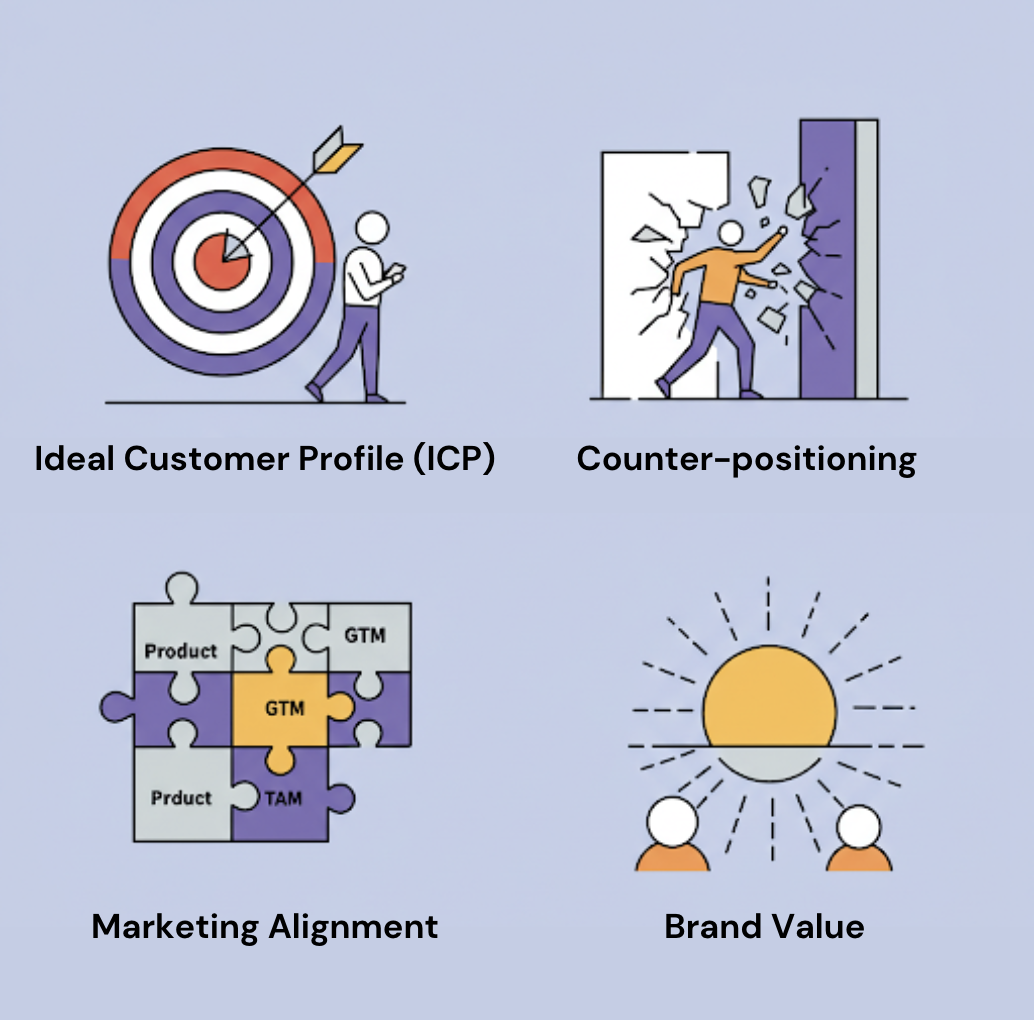 During a recent Theory Office Hours with Kady Srinivasan CMO at Lightspeed Commerce, Dropbox, and Klaviyo, we discussed several powerful insights emerged on how early-stage companies should approach marketing.
During a recent Theory Office Hours with Kady Srinivasan CMO at Lightspeed Commerce, Dropbox, and Klaviyo, we discussed several powerful insights emerged on how early-stage companies should approach marketing.
Here are the highlights :
-
Define Your ICP Before Anything Else
The most fundamental decision for any startup is determining your Ideal Customer Profile (ICP). Without clarity on exactly who you’re targeting, GTM efforts become diluted and ineffective.
The earlier the company, the narrower it should be. With scale & capital, it can broaden.
“I think it’s super important to know which layer of this you are tackling”. What we were selling was not just email marketing. We were actually selling email as a growth lever, meaning we could go in and say, ‘we’re going to help you drive 40% of your revenue from email,’ which was completely not done in the industry before. We could only get to that level of insight because we knew our ICP really well. We changed the game ie we changed the problem people bought us for."
When launching a startup, narrowly defining your ideal customer profile (ICP) is not just helpful—it’s essential for survival. Focus is “the most important thing” for startups, with “trying to straddle too many things” being “the biggest killer of startup success.”
A precise ICP forces you to concentrate your limited resources on a specific audience where you can perfect your sales motion, messaging & value proposition.
-
Counter-Position Against Industry Norms
Early-stage startups should challenge the status-quo. This isn’t about attacking competitors directly, but rather challenging how customers think about solving their problems.
“Counter-positioning is essential for startups because there’s a way that the world has moved, and you are saying, ’no, I think it will move differently,’” “You have to surprise the buyer. You have to tell them, ‘you’re thinking about the world incorrectly.’”
Klaviyo did this by positioning itself not as an email tool but as a revenue driver. We told customers, “Google is killing all your third-party cookies. You will only have first-party data to rely on, so if this is your time to switch, you have to do it now.” This created urgency around the problem and showed customers what was at stake.
-
Align your GTM strategy & Product to your ICP & TAM
Your GTM strategy should always result from considering your ICP’s buying behavior, needs, & the TAM, not the other way around.
PLG motions with 2-4% conversion rates require millions of potential users to achieve $100m+ ARR business. In markets with smaller customer counts, each lead is so valuable it should be managed by a salesperson, which increases conversion rates to 15-30%.
If you are a PLG business, you can migrate upwards over time. If you are an SLG business, becoming a PLG business is quite challenging to impossible. At Dropbox, we were primarily a PLG business that became more SLG over time as customers pulled us market.
-
Build Credibility Through Brand Value, Not Fear
While fear can drive short-term action, it creates negative brand associations. The most successful companies build marketing around positive outcomes and aspirational values.
“Creating fear never works, because in the immediate, you can probably prompt people to take action because they’re like, ‘Oh my! I must do something,’ but it leaves a negative perception in their mind.” “You don’t become a beloved brand over a period of time.”
Instead, focus on how your solution helps customers achieve positive outcomes. Klaviyo positioned itself as a premium brand that took its craft as seriously as its customers did.
“We don’t want to be like every other B2B email company with blue fonts. We want to be completely different.”
As you craft your marketing strategy, remember this advice:
“Your marketing should answer: I’m the best at… I’m the only… I’m the fastest ever… That automatically gets you into the blue ocean space. You’re playing a different game at that point.”
These four principles—narrow ICP, counter-positioning, aligned GTM & product, & positive brand building—don’t just help startups capture market share; they redefine markets entirely.